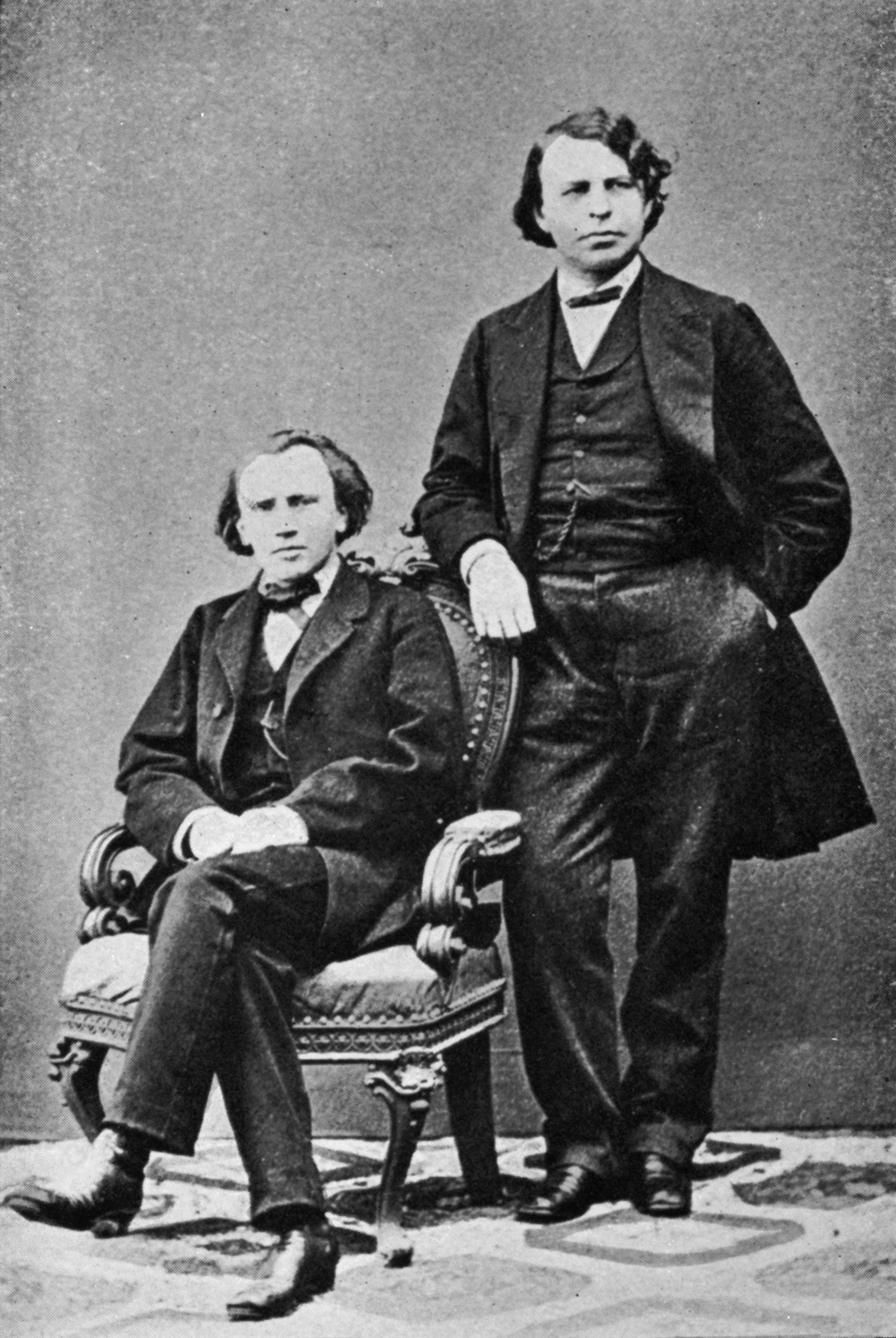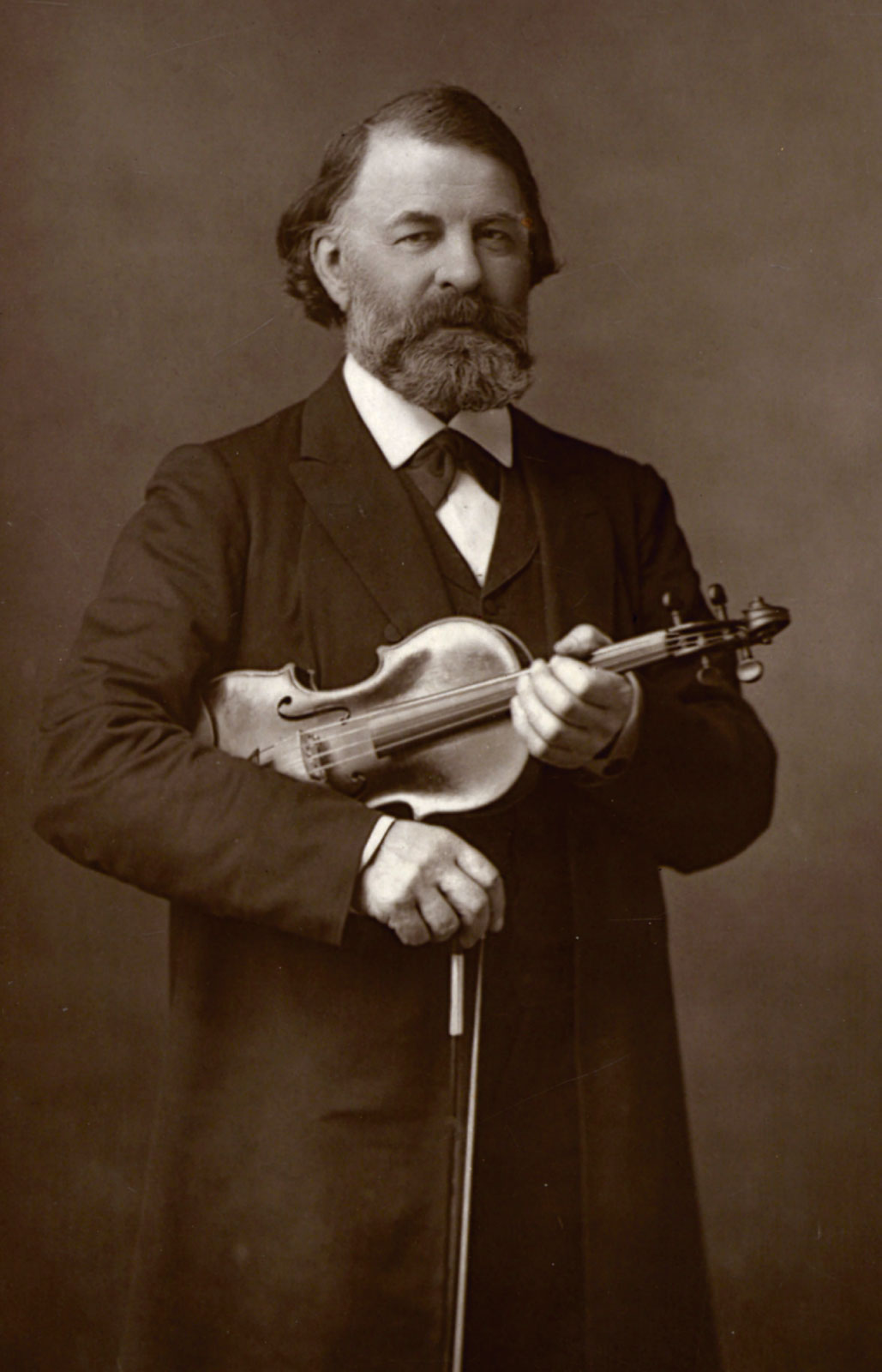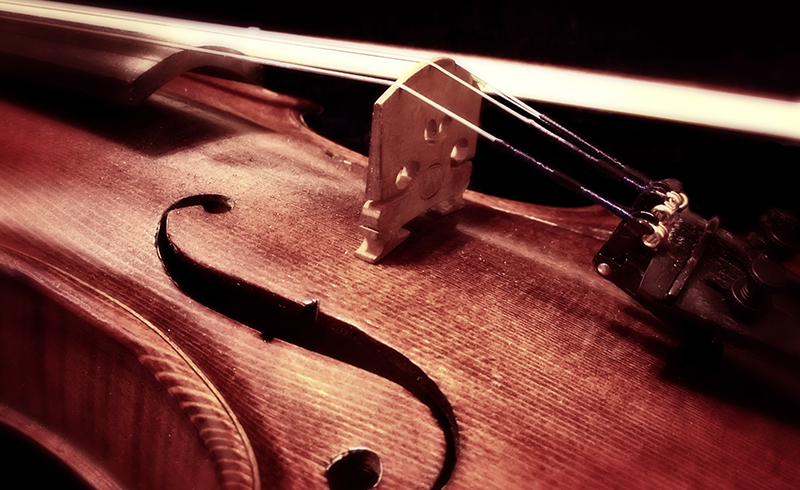On December 5, 7, and 8, world-renowned violinist Gil Shaham returns to Jones Hall for Shaham Plays Brahms + López World Premiere, a program featuring Brahms’ magnificent Violin Concerto and the world premiere of a symphony inspired by space exploration. Discover how friendship and lofty artistic ideals inspired Brahms to make his Violin Concerto a truly symphonic musical manifesto. Learn more and get tickets.
Brothers in Arms

Born in 1831 to a Hungarian-Jewish family, Joseph Joachim was a child prodigy who became one of the great violinists of the 19th century. At age 12, he made his London solo debut playing Beethoven’s Violin Concerto with none other than Mendelssohn leading the orchestra. Through subsequent performances, the young virtuoso all but single-handedly revived this long-forgotten masterpiece. Even from a young age, Joachim became renowned for playing with complete faithfulness to a score while also creating the illusion of improvisation, almost as if he were channeling the spirit of a composer. A 14-year-old Brahms witnessed his remarkable performance style when he first saw Joachim perform Beethoven’s Violin Concerto in 1848. Later Brahms confessed to Joachim: “I reckoned the concerto to be your own… I was certainly your most enraptured listener.”
When Brahms met Joachim five years later, the two became lifelong friends, united by their shared musical values: respect for music of the past, and the belief that music should have real meaning and substance rather than mere flashy virtuoso passages or stylistic novelties. Many years, however, would pass before Brahms composed his violin concerto, likely because Joachim wrote three concertos of his own. In later years, when Joachim composed less and focused on performance and teaching, Brahms at last felt free to create a musical masterpiece that would showcase the gifts of his longtime friend.
Brahms began composing the concerto during the summer of 1878 while staying at Pörtschach am Wörthersee (the same scenic town where he had composed much of his Second Symphony the year before). Throughout the composition process, Brahms collaborated closely with Joachim, seeking his advice on violin technique for the solo part. Though the main work on the concerto was done that summer, Brahms continued to refine the solo part and orchestration together with Joachim even after the premiere performance on New Year’s Day 1879. The concerto that emerged would be one of the great works for the instrument.
The Music
In terms of its expressive preoccupations, the concerto has much in common with the symphony that preceded it in Brahms’ output (including its key of D major). The first movement opens with a simple, pentatonic phrase in the style of a horn call (it only uses notes that could easily be played on a valveless, natural horn), evoking an idyllic, pastoral atmosphere:
The harmony shifts to the distant key of C major as the oboe continues the melody, which soon turns toward darker, more dissonant harmonies. Strident, unharmonized octaves force the music back to D major, and the return of the opening motifs begins a transitional passage.
The music fades; above a timpani roll, the woodwinds prepare to introduce the expected lyrical second theme, but the theme fails to appear. In its place, the transitional music continues as its harmonies darken, leading to a stern theme marked by dotted-rhythms in D minor. The music becomes stormy, until the soloist makes a dramatic entrance.
Fending off the menacing staccato theme in the orchestra, the soloist leads back to the opening theme, expanding and reinterpreting the ideas presented thus far. This time, however, after the transitional passage the soloist does introduce the missing second theme: a singing, beautiful melody. The stern, staccato theme soon follows, however, now played by the soloist. The theme builds to an extended orchestral passage: the violins play a dark, turbulent version of the once peaceful opening theme. Memories of the lovely second theme alternate with the transitional material until the soloist reenters.
Together the soloist and orchestra continue to develop the transitional material. The soloist introduces a melancholy new idea in counterpoint to it, which becomes increasingly intense. At last, the solo violin turns the music in a new direction with fragments of the staccato theme and the opening theme, leading to a grand reprise of the movement’s main ideas.

This time, the menacing staccato theme is met by a powerful orchestral passage based on the opening, which builds to a grand pause. A cadenza—an extended passage for the soloist alone—ensues. In the days of Mozart, the soloist (usually the composer) would have improvised the cadenza in the moment, but by Brahms’ day composers almost always wrote cadenzas into their scores. In a nod to the earlier tradition, Brahms chose to let Joachim write the cadenza for this concerto. Though others have written cadenzas for it as well, Joachim’s remains the standard. Joachim’s cadenza touches on all of the movement’s main themes with the exception of the lyrical second theme. Notably, it serves to recapitulate the melancholy counterpoint that arose during the movement’s development.
The soloist’s traditional final trill leads to a tranquil coda. The opening theme takes on a sunset hue as the soloist plays it for the last time. Just as the movement seems about to fade away, the music accelerates to a thrilling conclusion.
Contrary to tradition, Brahms originally planned to compose four movements for this concerto, making it more like a four-movement symphony than a traditional three-movement concerto; during the composing process, however, he wrote to Joachim (with his typically self-deprecating style) that “The middle movements have gone, and of course they were the best! I have written a meager Adagio instead.” The second movement is in fact one of Brahms’ loveliest creations. The movement begins with a serenade for woodwinds, alluding to Mozart’s serenades and divertimentos for similar ensembles. The oboe takes the lead in this nocturne with a simple, pastoral melody in F major. The soloist then enters with a variation on this theme. A brief transition leads to a contrasting central section in the remote key of F-sharp minor. Throughout this moving passage, the soloist almost seems to speak through music. The movement ends with a return to the opening melody; this time the oboe gracefully alternates phrases with the solo violin.
Many commentators have noted the “Hungarian” style of the finale—likely a nod to Joachim’s native land and his own Violin Concerto No. 2 “in the Hungarian manner.” Its foot-stomping main theme alternates with contrasting episodes, including one in which the music seamlessly slips from duple to triple meter. Another metrical slight-of-hand begins the movement’s coda as the main theme returns in lively “Turkish” style in 6/8. The invigorating triplets and virtuoso runs gradually wind down before the concerto ends with powerful final chords.
The Test of Time
Contemporary response to the concerto was initially mixed; for instance, the Viennese gave the concerto an enthusiastic reception while Berliners were more restrained. For several years Brahms withheld the concerto from publication to give Joachim exclusive access to the piece, but even after the concerto was published Joachim remained its only interpreter for some time. Though the solo part is very difficult to play, the concerto does not include any passages primarily intended to show off the soloist’s virtuoso skill; throughout, technique is always at the service of expression rather than as an end in itself. The orchestra also plays a more prominent role in this concerto than was typical at the time, giving the work a “symphonic” quality.
It is perhaps for these reasons that the concerto initially failed to catch on. For instance, the violinist Pablo de Sarasate remarked, “I don’t deny that it’s fairly good music, but does anyone imagine […] that I’m going to stand on the rostrum, violin in hand, and listen to the oboe playing the only tune in the adagio?” while the conductor Josef Hellmesberger quipped that the piece was “a concerto not for, but against the violin” (Bronislaw Hubermann, one of the first violinists to take up the concerto other than Joachim, responded that it was “for violin against orchestra—and the violin wins!”). In the end, however, it is precisely these “symphonic” qualities that helped the concerto stand the test of time; in a way, the work is a manifesto for the values of musical integrity and substance that both Brahms and Joachim stood for. Today, it seems they were right. —Calvin Dotsey
Don’t miss Shaham Plays Brahms + López World Premiere December 5, 7, and 8! Learn more and get tickets.



